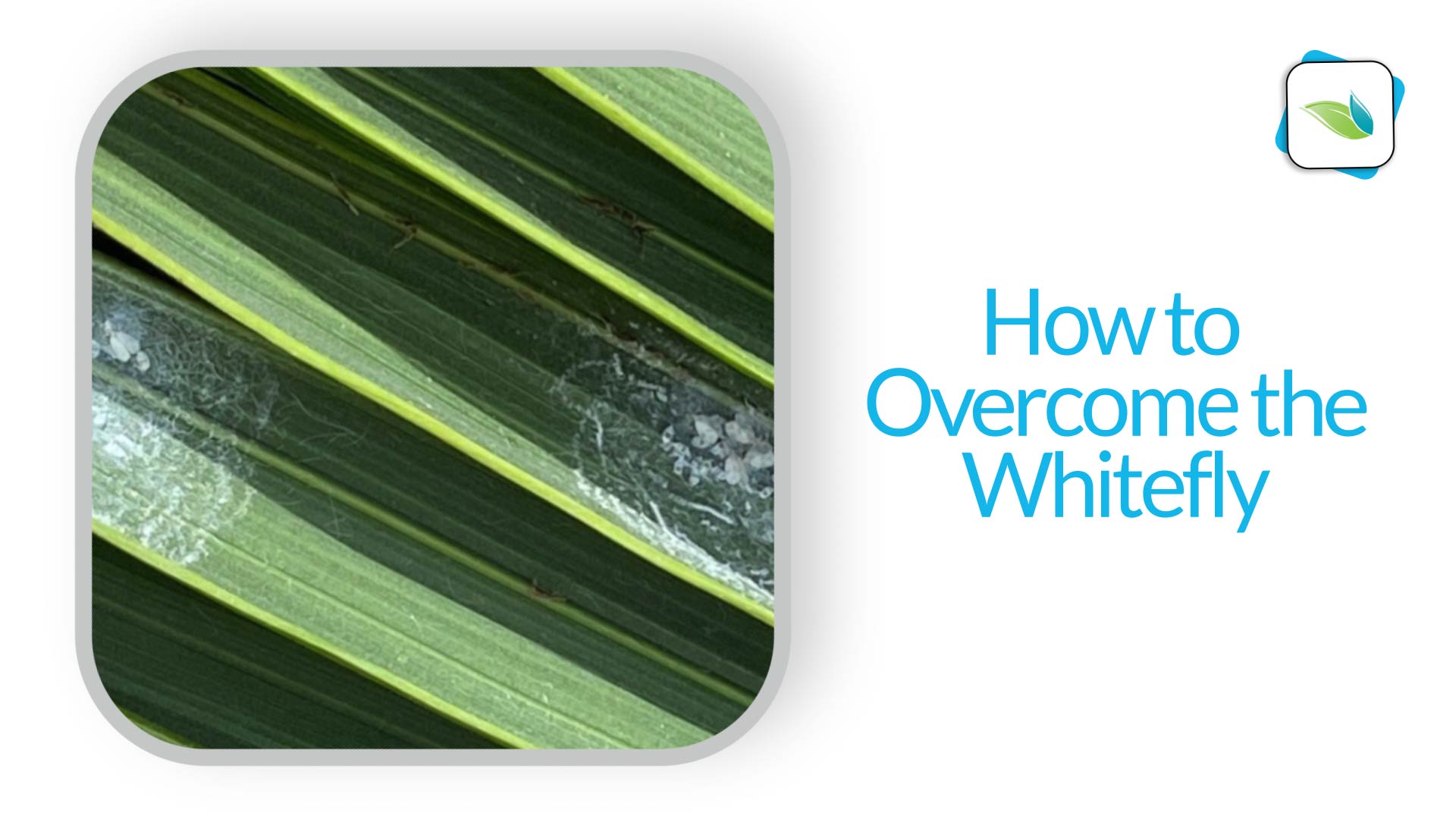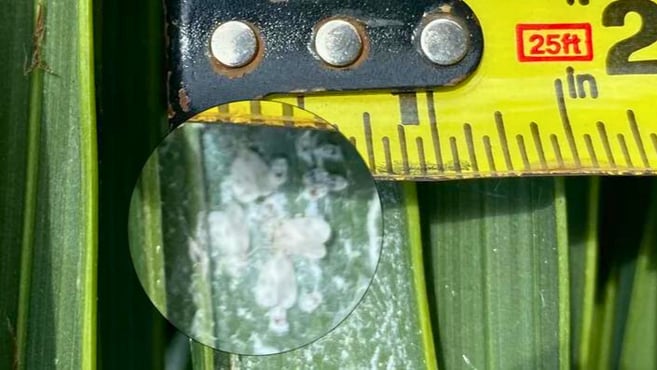How to Overcome Whitefly

Whitefly Treatment for Swimming Pools
Based on 10,000 gallons (37,855 Liters)
Overview
If you are in a warm, tropical climate, you might be familiar with the dreaded whitefly. Whiteflies are very small–usually no more than 1/8th of an inch–and almost impossible to see unless you are looking very closely. They live, eat and lay eggs on palm tree leaves, and leave behind a white residue in the process. The residue itself is not the problem; the waste and secretions that these whitefly pests drop into swimming pools is the problem. And for that matter, these sugary secretions discolor pool decks, furniture, other plants, and literally anything else that is under the afflicted palm tree.

The spiraling whitefly is the type that lives on the underside of palm trees, and its sugary secretion is nicknamed "honeydew."
Spiraling whitefly and Bondar’s nesting whitefly are especially nuisance pests because they secrete a substance called “honeydew.” This honeydew doesn’t cause lasting damage to infested trees, but it can damage outdoor furniture and flooring because this sticky substance encourages the growth of black sooty mold, which tends to stain surfaces such as wood and concrete."
This procedure is for addressing whitefly "honeydew" when it gets into a swimming pool. It is a sugary substance that chlorine apparently cannot oxidize, and instead gets consumed rapidly. Fortunately, Orenda products have been proven to remove whitefly honeydew from water. Just follow the steps below. You can also read the article on this subject in Pool and Spa News.
Related: How to Implement the Orenda Program
You will need:
- Test kit that can measure free and total chlorine.
- Double Purge dose (16 fl.oz./10,000 gallons) of PR-10,000 phosphate remover
- Double Purge dose (64 fl.oz./10,000 gallons) of CV-600 or CV-700 enzymes
- Non-stabilized chlorine (liquid sodium hypochlorite, or cal hypo granular shock)
- A positive attitude and possibly a theme song as you walk confidently into the backyard, ready to conquer whitefly.
- Clear communication with the homeowner, because they need to hire a pest control company to inject the trees and kill the whitefly infestation.
Day 1
- Test free and total chlorine levels.
- If you have whitefly honeydew in the water, chlorine is likely zero.
- Add a double purge dose of PR-10,000 (16 fl.oz./10,000 gal) around the perimeter of the pool.
- The pool may cloud up from this, which is normal.
- Add a double purge dose of CV-600/700 enzymes (64 fl.oz./10,000 gal) around the perimeter of the pool, or into circulation.
- Brush the pool thoroughly.
Day 2
The water should have cleared up and you may see white dust from the PR-10,000 precipitate.
- Test free and total chlorine. Add non-stabilized chlorine as necessary to get free chlorine levels up to 4 ppm.
- If the pool has a salt-chlorine generator, leave the generator at the current levels until the pool begins to hold chlorine again, then adjust as needed.
- Discuss a landscaping and pest control plan with the homeowner. Whitefly will not leave the property otherwise.
Following Week
- Clean filter and/or backwash as needed.
- Add a second purge dose of PR-10,000 (8 fl.oz./10,000 gallons) around the perimeter of the pool.
- Begin weekly maintenance regimen of CV-600/700 Enzymes.
- For a heavy infestation of whitefly (more than one tree), use 10 fl.oz./10,000 gallons weekly.
- For a light infestation of whitefly (one tree or less), use 5 fl.oz./10,000 gallons weekly.
- Once affected trees are injected and/or the infestation is gone, consider switching to CE-Clarifier for weekly maintenance.
- Adjust other water chemistry and balance the LSI using the free Orenda App LSI Calculator.
Additional Notes
The main reason why whitefly is such a challenge for swimming pools is that their sugary secretions–called honeydew–are not able to be easily oxidized by chlorine. So chlorine gets consumed very rapidly trying to remove it from water. Honeydew causes ugly mold and other discolorations all over the pool deck, furniture, railings, and any other surfaces that happen to be below an infested palm tree. Whatever you do, do not pressure wash the deck in the direction of the swimming pool, because that will blow more honeydew into the water, and you will be back at square one. The key to making this procedure work is to break down the honeydew in the water using enzyme and phosphate remover, and guiding the homeowner to address the source of the problem through either pest control or landscaping (removing the tree altogether).
If you need more help, just contact us. We have helped many pools conquer the whitefly problem.
More Questions?
866-763-4269
